Long gone are the days when we primarily considered the traditional ‘target man’ or ‘target forward’ someone who was mainly good for holding the ball up by utilising their physical advantage.
With the evolution of styles and more focus on technical ability, target men have become multi-faceted players who can be the cherry on top of some of the most dynamic and impressive tactical systems.
Despite some of the best teams in Europe having success without a recognised focal point for their attacking arsenal, we must look no further than La Liga across the past two seasons to truly understand just how effective target forwards have been.
The race for the Pichichi trophy (La Liga top goalscorer) was dominated by excellent target men last season, and teams across the league have subsequently reacted in the transfer market to inject such qualities into their squads.
In this tactical analysis, we will begin to highlight some of the most effective target men in La Liga and address the unique qualities that have allowed the position to stand the test of time as our beautiful game has evolved over the decades.
Our analysis should indicate just how influential these target forwards have already been in this campaign, especially when applying some of the tactics of Spain’s most exciting managers.
Alexander Sørloth At Atlético Madrid
Suppose the Pichichi trophy wasn’t already enough of a reason to believe in the effectiveness of Spanish football’s prolific number nines.
In that case, the summer transfer window has shown just how sought-after players of that ‘target man’ profile have been in La Liga.
After a fiercely contested scoring battle between Artem Dovbyk and Alexander Sørloth at the end of last season, Diego Simeone decided to add the Villarreal forward to his attacking arsenal alongside Julián Alvarez and Antoine Griezmann, offering the Argentine manager an impactful focal point for a new striking partnership.
Alexander Sørloth Radar Map At Villareal
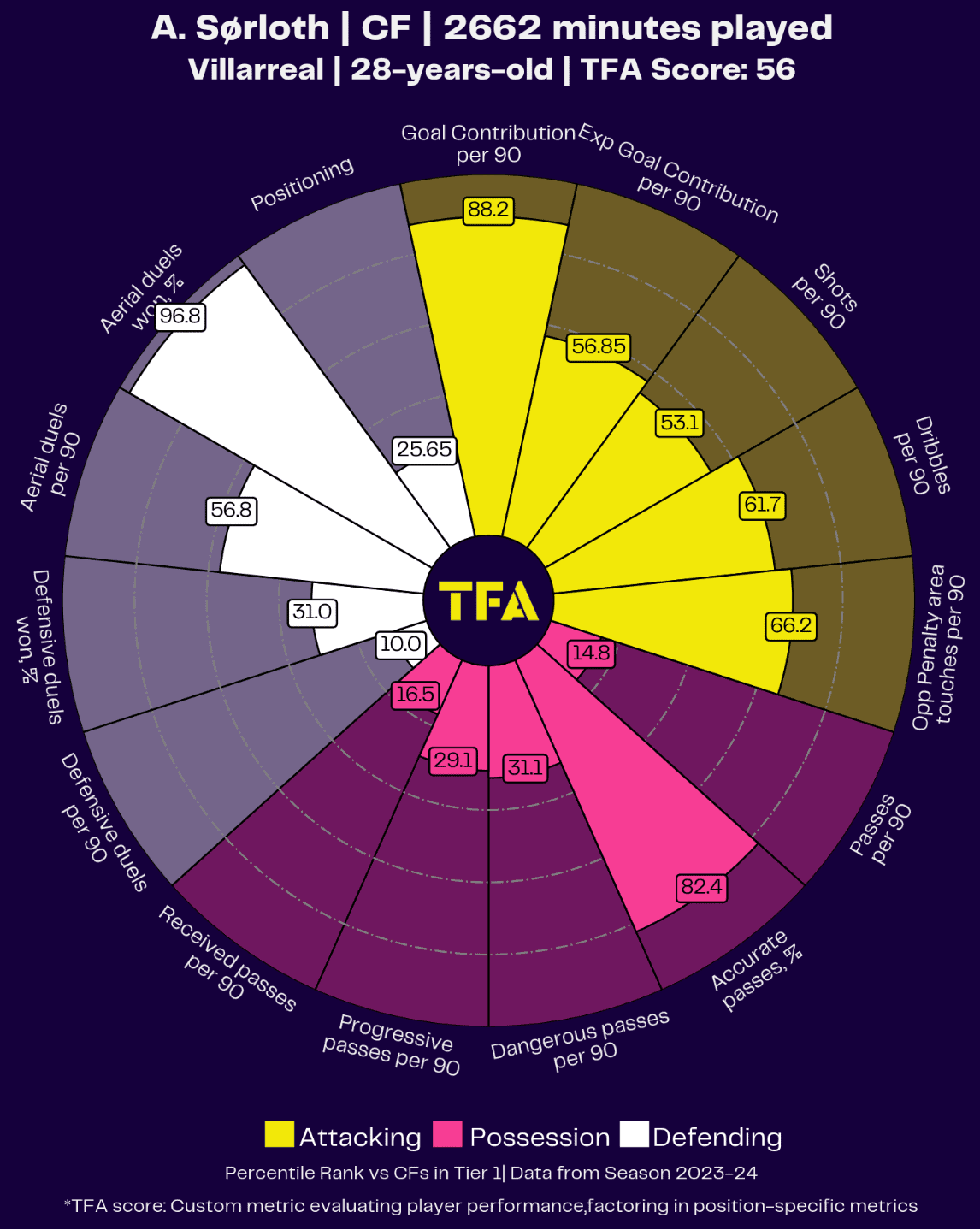
In Sørloth’s opening games within Simeone’s system, we have begun to understand how his intelligent movement can manipulate the defensive positioning of the opposition’s central defenders, a key characteristic of the new-age target men.
For Atlético’s first goal, we see Marcos Llorente progressing the ball along the right flank with Sørloth positioned between the two Villarreal central defenders, seemingly darting into the penalty area to meet a potential cross towards the near post.
However, Sørloth opts to stop in his tracks and smartly arch his run towards the far post and behind Albiol and Bailly, instead creating a vertical mismatch against Kiko Femenía as he arrives into the penalty area to defend.
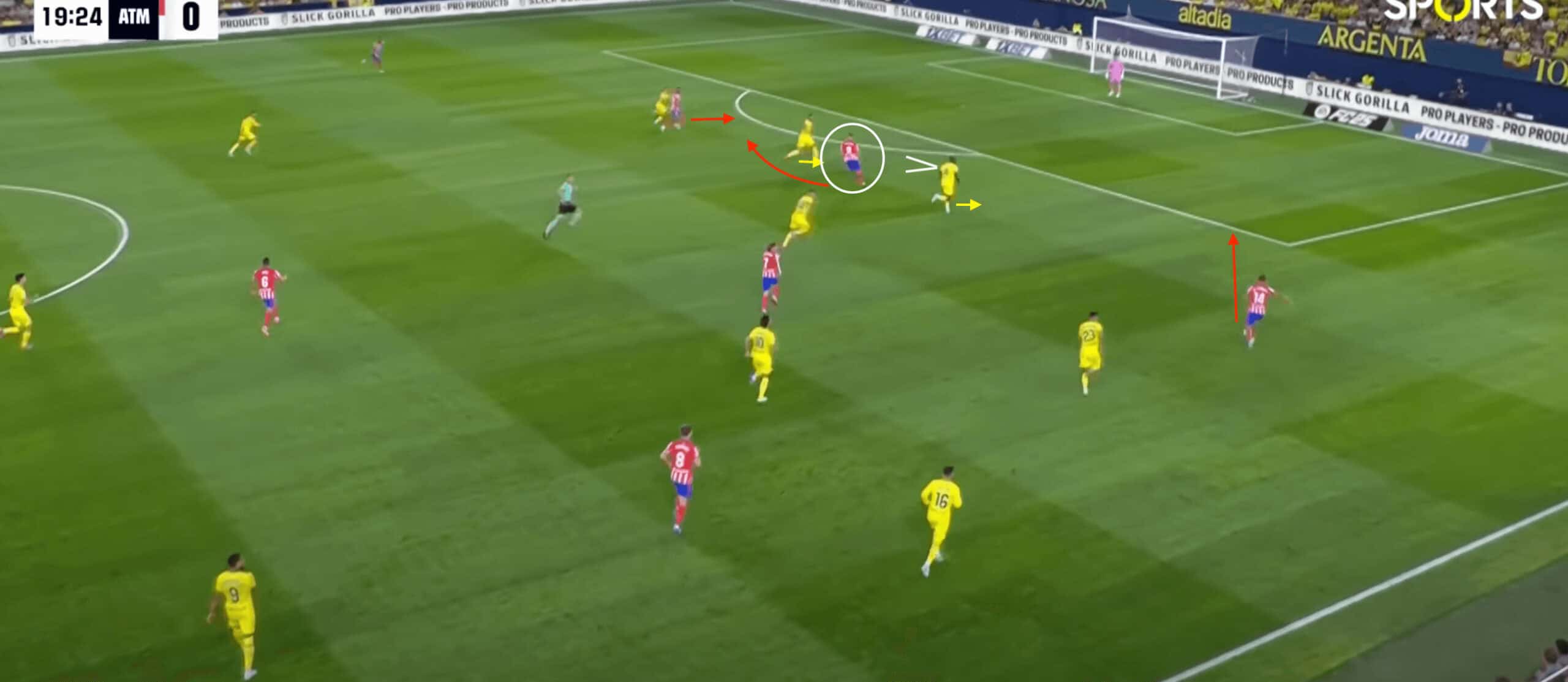
The subsequent movement forced Bailly to hesitate in his decision-making to monitor the run of Sørloth, denying the Ivorian defender enough time to close down Llorente as he arrived into the penalty area, providing just enough space for the Spaniard to smash home from the narrow angle.

Target forwards are known for their impressive movement through the central areas, so it was important to see the variation in Sørloth’s runs during a similar sequence later in the half, taking advantage of Villarreal’s defensive inconsistencies with a clear lane towards the centre of goal as Bailly was drawn out wide towards Barrios.
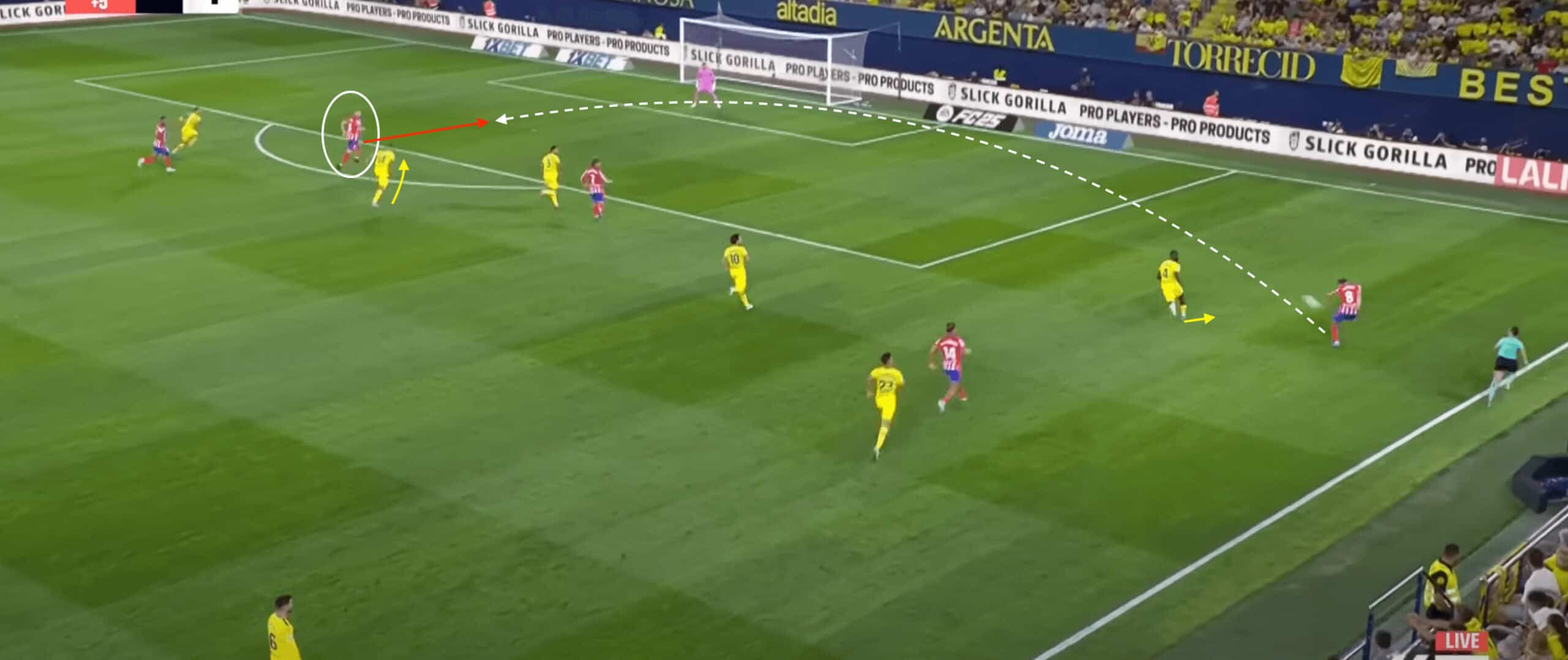
It signifies an excellent evolution to Atlético’s attacking threat and an avenue to target for the rest of the season, especially when considering their 4th highest crossing success rate of 30.56% thus far.
With the departure of Álvaro Morata, Sørloth’s aerial dominance will certainly fill his new fans with immense confidence when in and around the penalty area, with the Norwegian ranking within the top 1% of LaLiga forwards last year for aerial duel success.
Orri Óskarsson – Real Sociedad’s New Striker
To help manage the huge loss of Mikel Merino in the Sociedad attacking lineup, La Real selected a breath of fresh air when selecting their new striking profile.
Orri Óskarsson made the switch from Copenhagen for around €20m and has already shown glimpses of why these new-age target men can be so dangerous when looking to link play.
Orri Óskarsson Radar Map At FC København
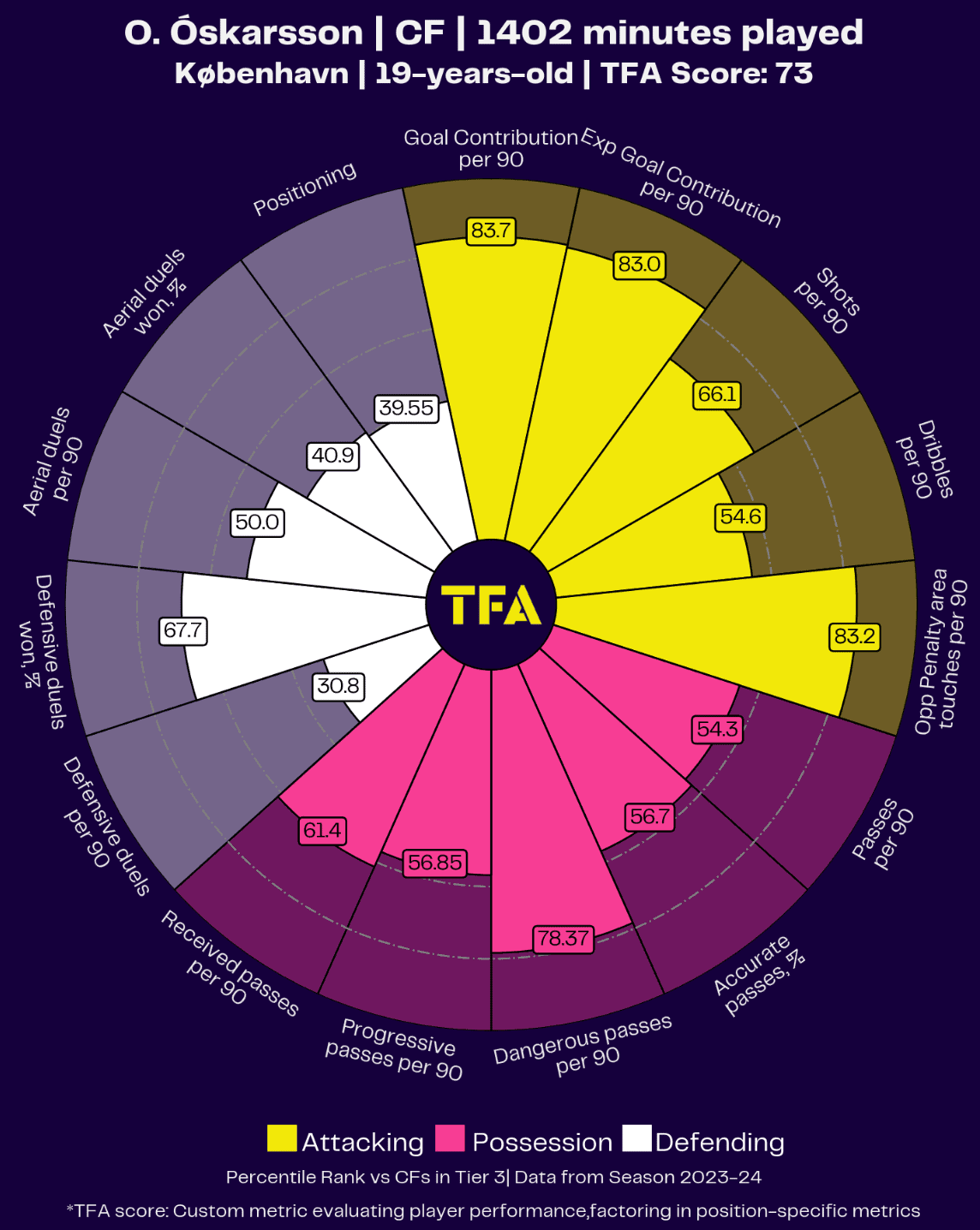
The target man was always highlighted as a player who would be integral to the attacking build-up of their side but often compromised their mobility in order to offer more of a physical backboard to allow his teammates to run off.
But already in the 2024/25 season, defenders have begun to think twice about their tendency to press high and contest their opposition’s number nine for fear of being exploited in the space behind the defensive line
Target men have evolved in their technical abilities and continue to display intricate first-time passing sequences, shifting the ball quickly to allow their side to progress up the field in an instant.
In their recent fixture against Mallorca, Real Sociedad were able to cut through the opposition midfield and pick out the intelligent movement of Óskarsson when the Icelandic forward dropped into the hole.
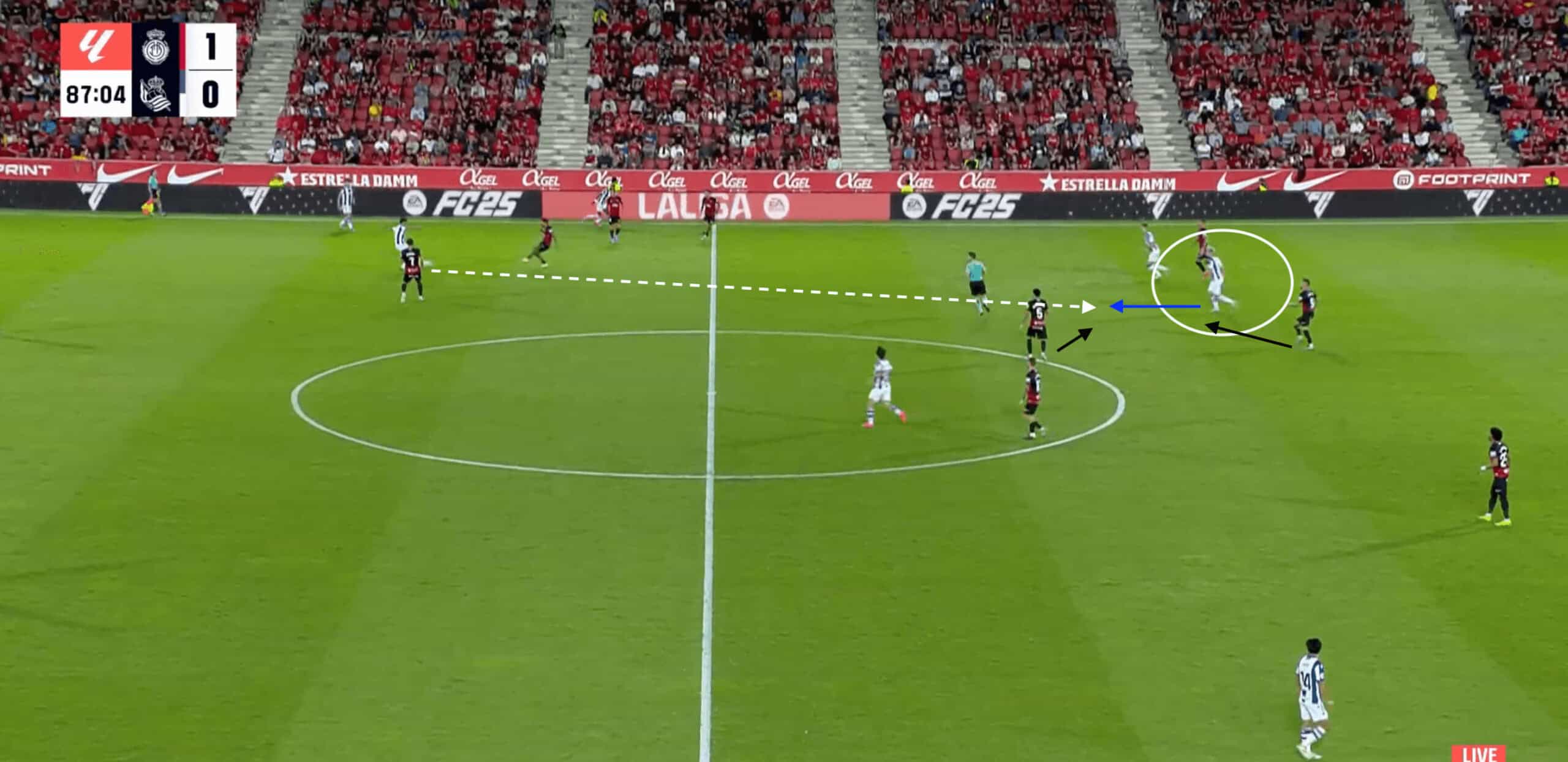
Óskarsson demonstrated an ability to withstand the pressure of two Mallorca defenders before performing a deft flick in towards his teammate.
His subsequent movement signalled just how effective he is as a powerful runner.
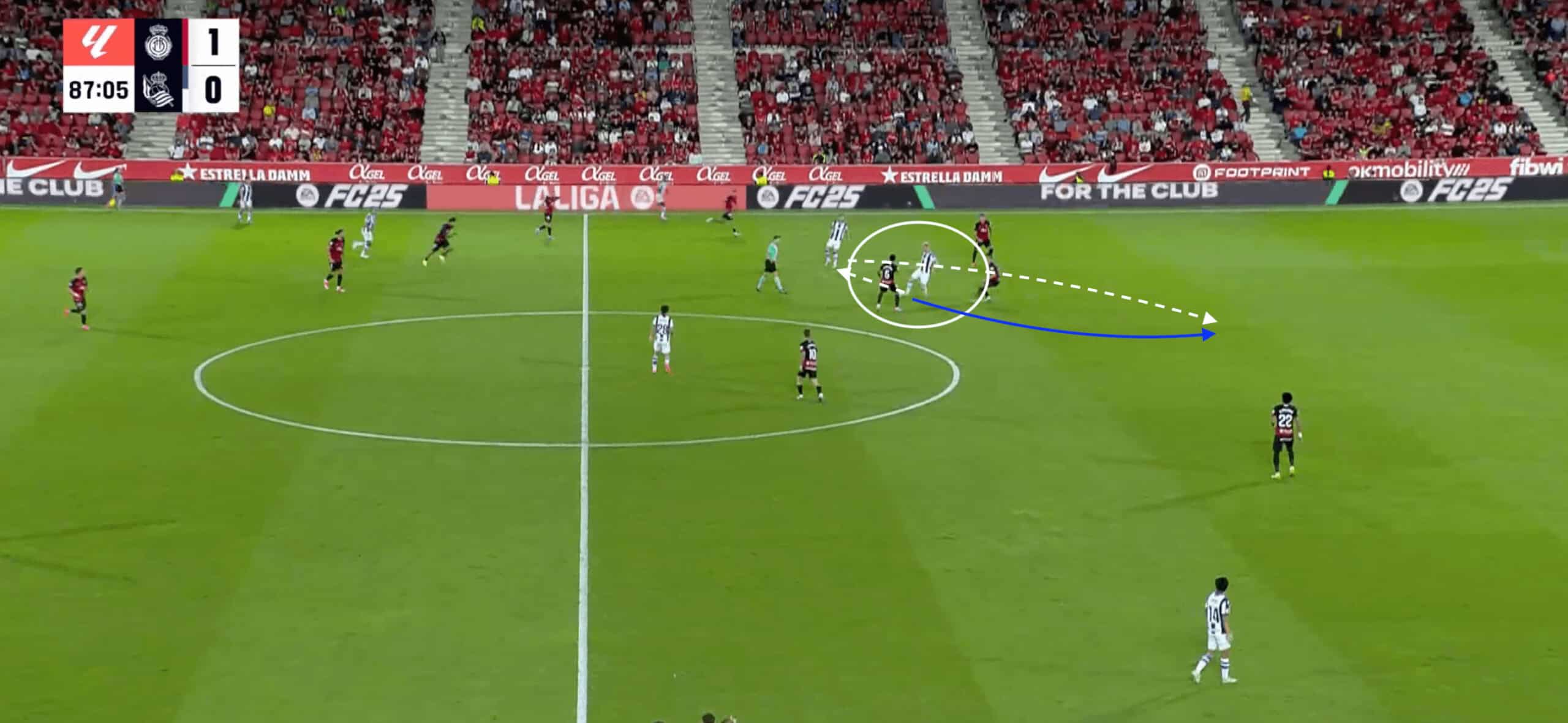
From the start of this season, we have also seen how the more mobile target forwards have evolved in their roles and positioning when picking up pockets of space towards the flanks, coining the term ‘wide target forwards’.
Bojan Miovski at Girona has shown just how effective these target forward characteristics can be when deployed on the wings.
Defenders need help with their positioning when tracking runners wide, creating serious size mismatches against smaller fullbacks.
The strikers of Óskarsson’s nature are well suited to exploiting the space in behind a defensive line who tend to operate at a much higher depth, but how do other target men in LaLiga fare when they aren’t afforded the same luxuries?
Robert Lewandowski’s Revival At FC Barcelona
At the age of 36, many fans of Barcelona were left frustrated with the attacking contributions of Robert Lewandowski in Xavi’s farewell season at the club, sparking conversation regarding a potential new addition to lead the line.
However, under Hansi Flick tactics, Lewandowski has hit the ground running once again and has perfectly exhibited the benefits of a target man who is unable to match the mobility of the more youthful forwards in today’s game.
Robert Lewandowski Radar Map At FC Barcelona
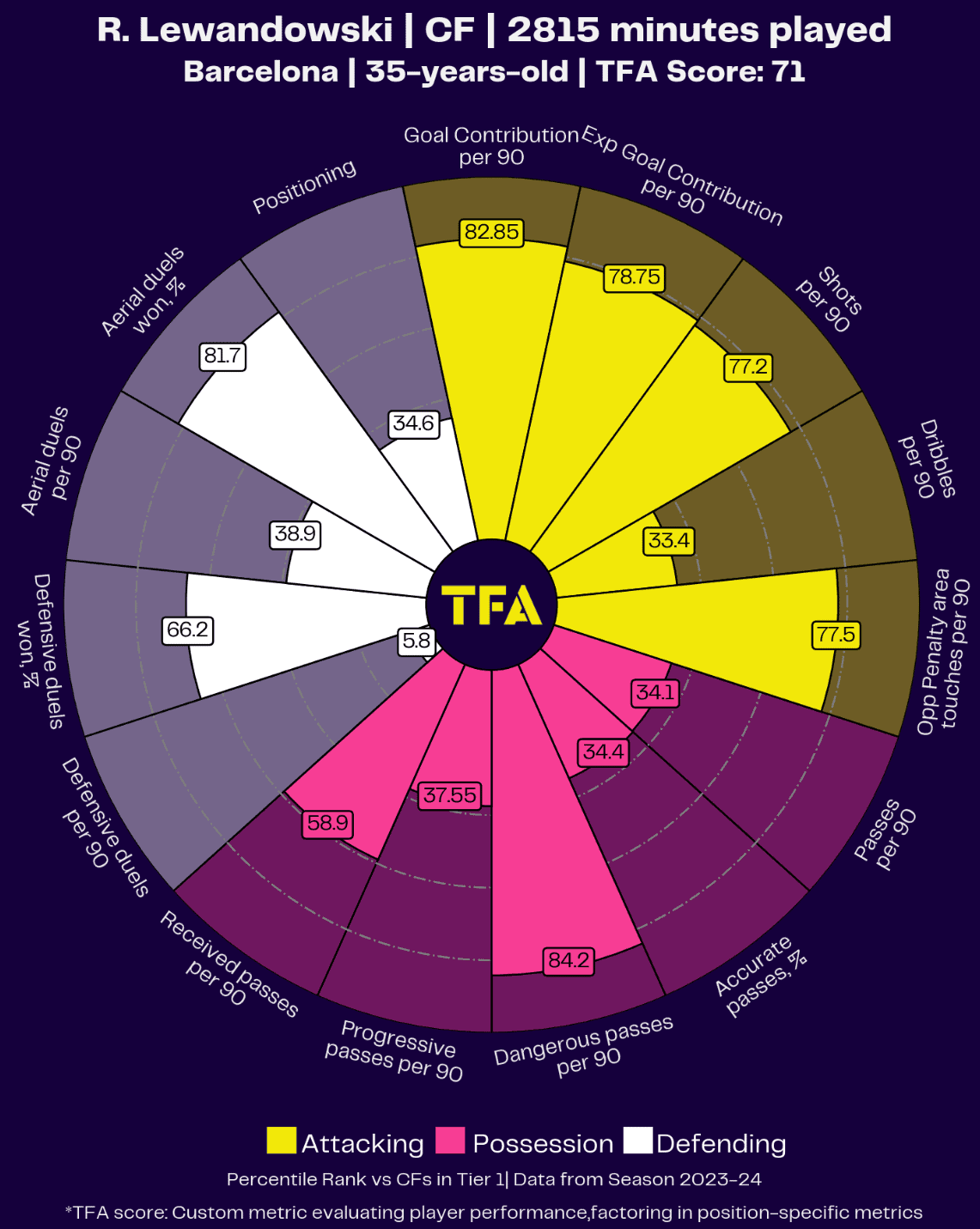
One of the most essential features of a target man would be their ability to produce and convert goalscoring chances in and around the penalty area.
And Lewandowski is certainly no exception.
The Polish striker currently leads the league with 4.7 expected goals and an impressive 0.87 goals per 90 minutes, becoming a key focal point of an electric Barcelona attack.
But maybe more impressive is his ability to dictate the proceedings when not on the ball, indirectly creating huge chances for his teammates to prosper in front of goal.
Lewandowski may not have the same level of explosive power that Óskarsson exhibits when peeling off defenders and bearing down on goal.
However, he manipulates the opposition defenders when playing as high up the pitch as possible with his back to goal.
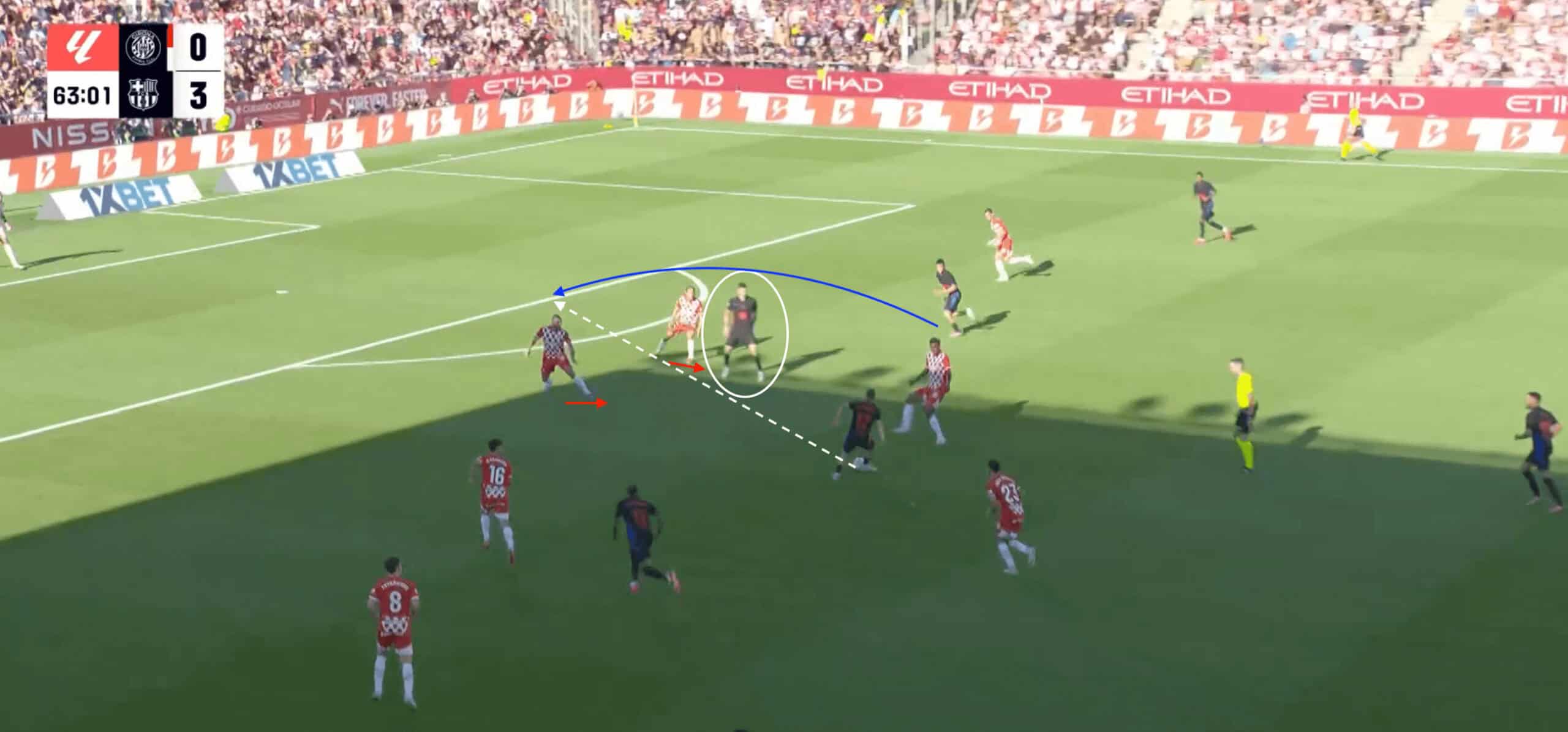
From these scenarios, the likes of Pedri and Dani Olmo have thrived in and around the edge of the penalty area or when darting into the box unopposed, with defenders seemingly too focused on Lewandowski’s positioning.
This supports Flick’s main attacking philosophy of maximising his side’s verticality.
Lewandowski successfully stretched the opposition’s backline and helped to create valuable space in and around zone 14—an essential trait when looking to tackle a high number of teams operating in more of a mid-to-low block out of possession.
Target men are known as such because of their physical frame and ability to fend off the opposition with their back to the goal, but how do we see Lewandowski applying these skills when his side is in transition?
We saw an example of this when Barcelona were breaking away on the counter against Real Valladolid, with Lewandowski initially making an important run towards the near post in anticipation of the early cross.
As the ball is recycled to the top of the box, Lewandowski can recognise the vacant space within the penalty area and use his physical strength to pin Eray Cömert and deny the defender the opportunity to slide across and intercept play, allowing Dani Olmo to have an excellent sight of goal where he really should’ve converted the chance.
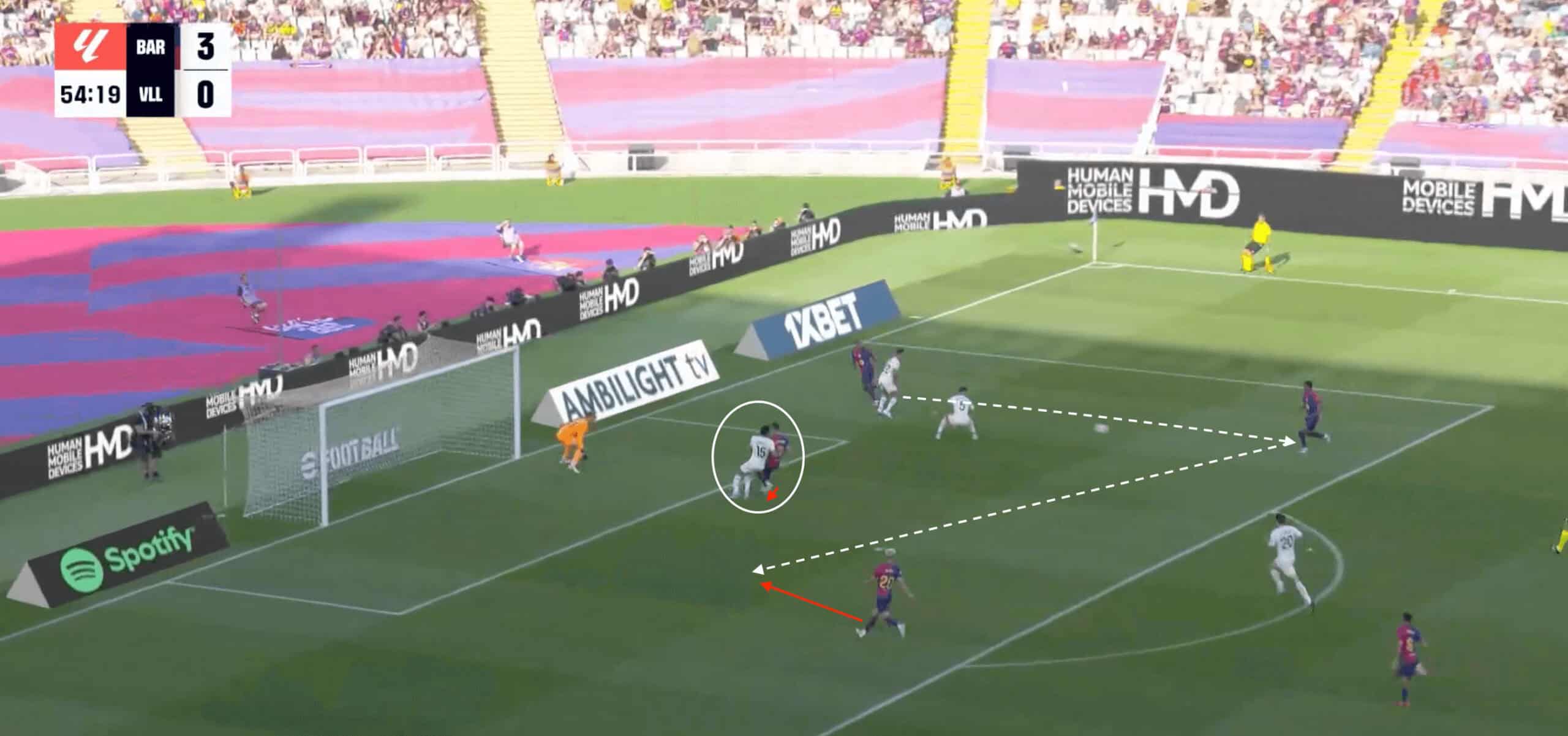
We must also highlight just how important these attacking profiles can be when they are out of possession.
Perhaps Lewandowski can be much more energetic when out of possession because his attacking duties often require less intense movements.
Target men are crucial for dominating play in the air when defending corners or free kicks that are sent into their penalty area, but against Monaco, Lewandowski displayed an intense press despite being down to 10 men.
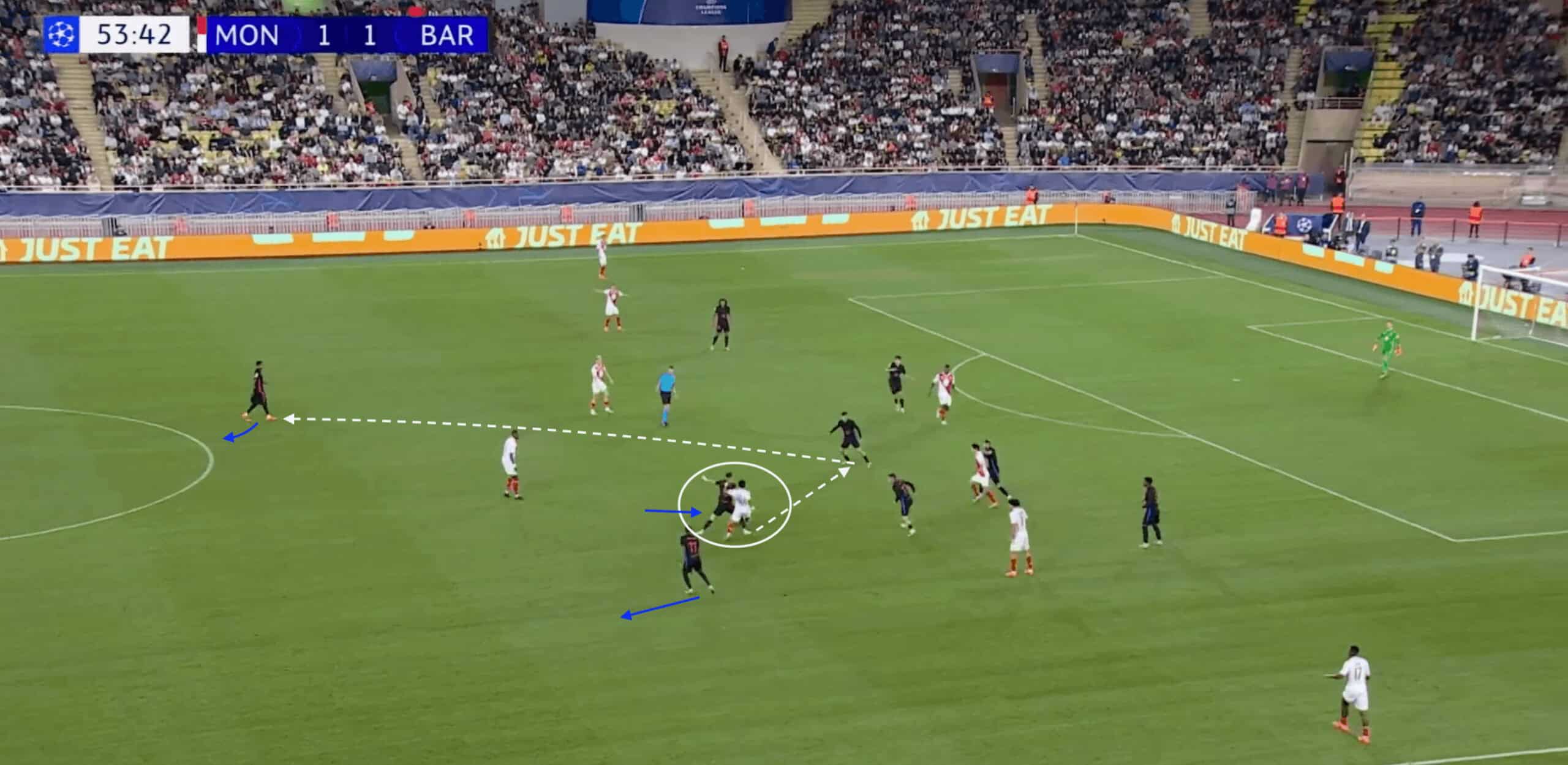
The Polish striker was able to dispossess the advancing central defender and launch an important counter-attacking sequence for his team, taking advantage of Barcelona’s increased presence within the central areas of the pitch.
Conclusion
The traditional centre-forward profile is well and truly back when it comes to LaLiga, but even across the globe, we see how influential target men have been across the past few seasons.
Take, for example, Pep Guardiola and Manchester City.
After an experimental period with no focal striking outlet, they now continue to dominate the division as a result of the elite striking qualities of Erling Haaland.
It will be exciting to monitor the career progression and performances of the new-age target men in LaLiga this season and see how their characteristics can translate to the elite level.
Many have taken a huge step up when moving to Spanish football.
Despite often being the centre of attention due to their height and frame, this creates an interesting narrative about how target men can be utilised within a dynamic striking partnership to create further problems for LaLiga defences.

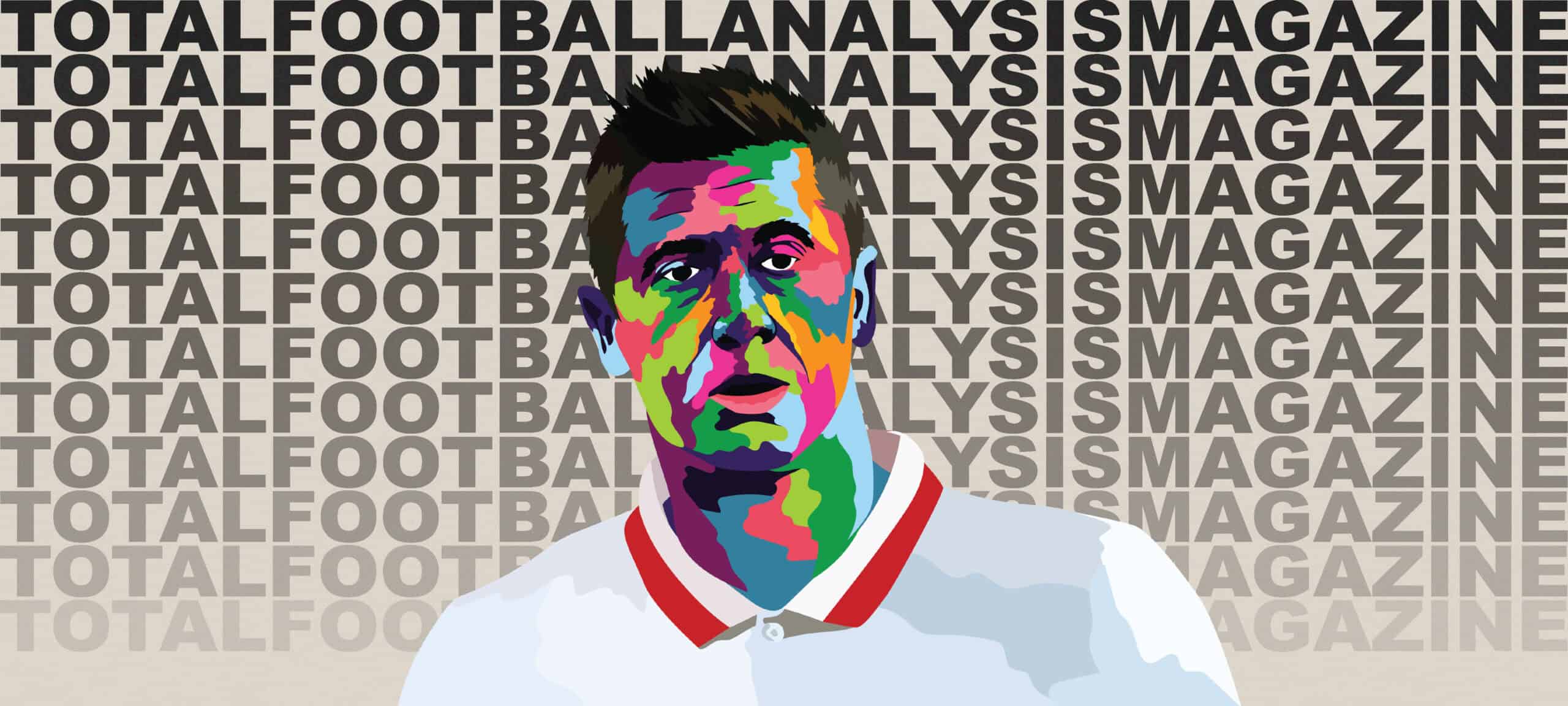



Comments